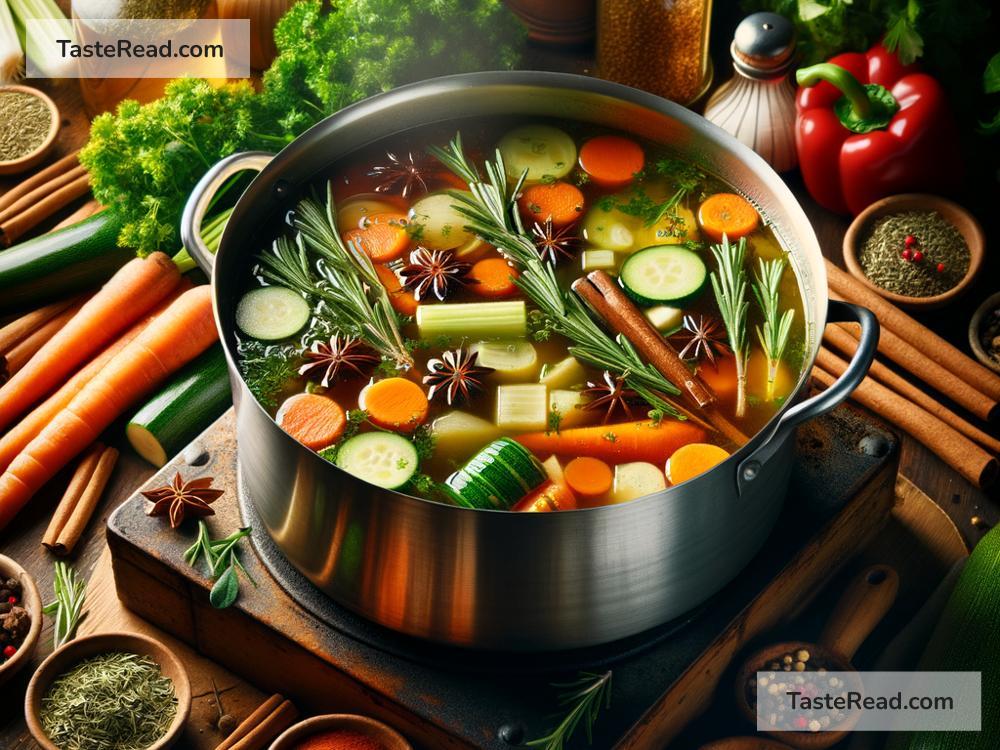Crafting Complex and Flavorful Broths for Soups and Stews
Soup season is upon us, whispering the promise of cozy blankets and steaming bowls of deliciousness. The heart of any great soup or stew lies in its broth. A rich, complex, and flavorful broth can elevate a simple dish to unforgettable heights. But how do you craft such a broth? Let’s dive into the soothing world of broths, breaking down the art of creating flavors that warm the soul.
Start with the Basics: Bones and Vegetables
The foundation of any great broth is the combination of bones (for non-vegetarian broths), water, and vegetables. Bones are packed with collagen, which when simmered slowly, transforms into gelatin, giving the broth its rich mouthfeel. For a vegetarian option, focus on a variety of vegetables to create depth. Key starter veggies include onions, carrots, and celery; known as the mirepoix in French cuisine, this trinity adds a sweet and earthy aroma.
The Power of Slow Cooking
Patience is the key when simmering your broth. A gentle, slow cook allows flavors to meld and deepen over time. Whether you’re using a slow cooker, pressure cooker, or a simple pot on the stove, the goal is to maintain just a bare simmer. This slow dance of heat encourages the extraction of flavors from your ingredients without clouding the broth or making it bitter.
Roasting for Depth
For an extra layer of flavor, try roasting your bones and/or vegetables before adding them to the pot. Roasting caramelizes the surface of these ingredients, developing a complexity that shines through in the final broth. Simply spread them out on a baking sheet and roast at a high temperature until they are well-browned. This step, while optional, can make a noticeable difference.
Seasoning Spots
While salt is a broth’s best friend, it’s wise to tread lightly at the beginning. The broth will reduce as it simmers, concentrating the flavors, including saltiness. Begin with a modest amount and adjust toward the end of cooking. This way, you ensure your broth is perfectly seasoned, not overly salty.
Beyond salt, consider the world of herbs and spices. Bay leaves, peppercorns, thyme, and parsley stems (yes, stems!) are classic additions that impart fresh, aromatic qualities. For more adventurous flavors, turn to spices like star anise, cinnamon, or cloves, but remember—a little goes a long way.
Water is Key
The quality of your water can impact your broth. If possible, use filtered water, especially if your tap water is heavily chlorinated. The purer the water, the cleaner and clearer your broth will taste, allowing the true flavors of your other ingredients to shine.
Strain for Purity
After hours of simmering, it’s time to clarify your broth. Use a fine-mesh sieve to strain out all the solids. For an ultra-clear broth, you can further strain it through cheesecloth. This not only ensures a silky texture but also a more appealing presentation, especially if your broth will star in a delicate soup.
Fat: To Skim or Not to Skim
Some broths benefit from the richness that a layer of fat provides, but too much can feel greasy. After straining, allow your broth to cool; the fat will rise to the top and solidify, making it easy to skim off. However, remember that some fat can carry flavors and add a pleasing mouthfeel. It’s all about balance based on your personal preference.
Store and Savor
Broth can be a labor of love, so making it in large quantities and storing it for future use is a smart move. It freezes beautifully, ready to be defrosted for your next culinary adventure. Use ice cube trays to freeze small portions, perfect for adding a flavor boost to sauces or cooking grains.
The Joy of Experimentation
Lastly, the making of broth is not an exact science but an art. Each batch is an opportunity to tweak, adjust, and experiment. Try different combinations of vegetables, bones, and seasonings. Note what works and what could be improved, making each batch uniquely yours.
Creating a complex and flavorful broth need not be daunting. With these simple principles and a bit of patience, you can craft broths that serve as the soul-warming base for countless soups and stews. So, embrace the simmering pot, inhale the aromatic bliss, and prepare for the inevitable compliments to your culinary prowess.


